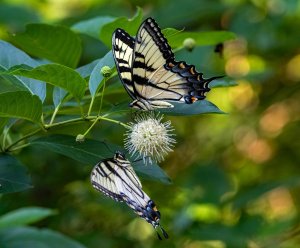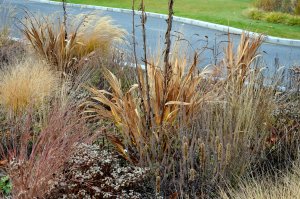Native plants in your Metroparks
July 5, 2023
By Erin Parker, Interpretive Services Supervisor
Summer in southeast Michigan tends to be hot and humid, which can be great for beach going and other water recreation! But it can take a toll on plants as long stretches of time pass by without a good soaking rain. One group of plants, though, can tolerate summer droughts – as well as drenching rainfalls – and look good doing it! By increasing the number and diversity of plants native to southeast Michigan and reducing non-indigenous turf grass expanses, we can keep our parks looking great and provide a variety of benefits to humans and wildlife.

Native or indigenous plants are those that evolved in and are adapted to a particular region. These are plants that are well-adapted to our four-season climate, provide food and shelter to our local wildlife, and are much more able to cope with long summer droughts. By expanding our “no-mow” zones within our metroparks, we’re reducing the need to water, mow, and maintain nonindigenous plants such as lawn grasses in areas that aren’t needed for sports, outdoor games, picnics, and access to facilities.
Benefits of Indigenous Plants
Native plants include a diversity of shapes, sizes, colors, bloom times, and structures which makes them ideal for native wildlife throughout the year. Pollinators visit the flowers for nectar during the warm months and also depend on the stalks, stems, leaves, and other plant structures for laying eggs, consuming as larvae (especially caterpillars) and overwintering. Birds feed on these insects and also the seeds produced in the fall. In the winter, as snow and wind make living conditions extremely challenging for survival, birds and small mammals find food and shelter in the protected pockets made by the tall steams bending and breaking.

While the term “garden” may bring to mind a highly-manicured space with horticultural varieties of flowers and colored mulch keeping unwanted plants at bay, native plantings also provide a wilder, less polished version. Native wildflowers bring vibrancy to our no-mow native garden spaces, both with their colors and shapes, but also drawing in pollinating insects and birds. Native bees, wasps, butterflies, moths, beetles, and a diversity of predatory and herbivorous arthropods thrive in, on, and around native wildflower planting. Because the plants are adapted to both our regional climate and our local invertebrate community, chemical and other pesticides are unnecessary. The loss of a few leaves or even plants to the voracious appetites of chewing caterpillars, aphids, and others is balanced by equally hungry spiders and other tiny predators. In turn, the invertebrate community feeds larger predators from fish to birds to amphibians and reptiles. Reducing or eliminating pesticides supports all wildlife, as these toxins can move up into the food chain harming non-target species.
Indigenous plants also have a variety of ways to cope with seasonal weather changes from our summer droughts to our winter deep-freezes. Their roots are often deep, able to reach soil moisture that shallow-rooted non-natives cannot tap in times of drought. Their leaves and stems may be fleshy or fuzzy, and may have thin leaves, all of which helps to reduce evaporation so that they retain more of the water they’ve taken up from the soil. All of this means that when lawns are being watered to keep them from browning and drying up, our native plants continue to thrive without water inputs.
As native plants and no-mow zones are increased across the Metroparks, we see an increase in wildlife use and decreases in the water and fuel used to maintain former turf grass areas. Some seeding and planting of wildflowers helps to increase the biodiversity and aesthetic value of these areas, but they require much less “hands-on” time – benefiting home gardeners, too!
